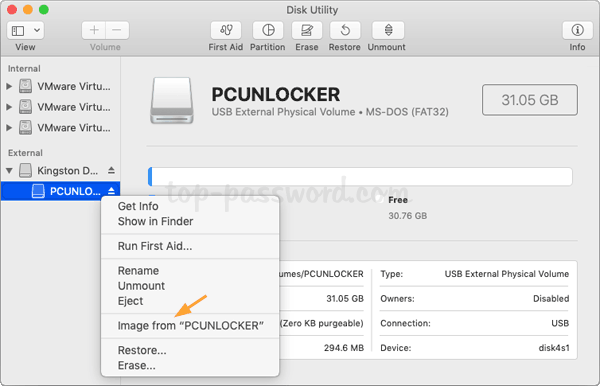
- #Make bootable usb from iso mac terminal how to#
- #Make bootable usb from iso mac terminal for mac#
- #Make bootable usb from iso mac terminal install#
- #Make bootable usb from iso mac terminal windows 10#
- #Make bootable usb from iso mac terminal windows 8.1#
For the purposes here, we’ll walk through how you can make a MacOS Big Sur ISO file by using the terminal. Because the macOS installer application is an.app file and do not arrive as a disk image, to create a MacOS ISO file requires a sequence of steps through the command line, or the use of a third party application.
#Make bootable usb from iso mac terminal how to#
Hi All Allot of 123myIT users have decided to take the plunge and upgrade their Mac OS X to Yosemite and I thought it might be a good idea to do a short video on how to create a bootable Windows 8.1.
#Make bootable usb from iso mac terminal windows 8.1#
Create Bootable Usb For Windows From Iso Mac Free This video will show you how to Create a bootable Windows 8.1 USB on a Mac running OSX Yosemite. Once you have those two things the process.
#Make bootable usb from iso mac terminal for mac#
What you need to make a bootable USB for Mac There are two main things you'll need to make your bootable install: a USB stick and the installation files. I used it to get Windows installed on a new PC. If you can use Ubuntu either via another machine or a simple Bootable USB version (I only had a Mac and a Windowless PC - and nothing I did on Mac properly allowed the Windows boot drive to actually launch from BIOS), once you get the Windows.ISO onto Ubuntu you can use WoeUSB (this tutorial helped me a lot) to make a nice bootable Windows USB.

/how-to-burn-an-iso-file-to-a-usb-drive-2619270-946eb27230b84a708f0d0f5a2f5bb9fd.gif)
Search for Command Prompt, right-click the top result, and select the Run as an administrator option. To create a GPT partition on a removable drive, use these steps:
#Make bootable usb from iso mac terminal windows 10#
However, this time, you should use the following steps to use the Diskpart command-line utility on Windows 10 to create the appropriate GPT partition, and then follow the above instructions. In this case, you may need to redo the entire process again. If the USB flash drive is not working with TransMac, it could still be a partition problem. Create a GPT partition on a USB flash drive Once you complete the steps, you can now insert the USB flash drive on your Mac computer to install, reinstall, or upgrade the operating system to the latest macOS version, which can be Sierra, Catalina, Big Sur, Monterey, or higher. TransMac creates a macOS USB bootable drive warning. Select dmg macOS file to create a bootable USB drive dmg file with the macOS installation files. Right-click the USB flash drive and select the Restore with Disk Image option from the left navigation pane.Ĭlick the Yes button to confirm the erase of the USB flash drive data.
#Make bootable usb from iso mac terminal install#
To create a bootable USB drive with macOS, use these steps:ĭownload and install TransMac on Windows 10.

One high-quality USB flash drive with 16GB of storage.Ĭreate macOS bootable USB installation media.Broken Mac computer running macOS (version 10, 11, 12, or higher).Create GPT partition on a USB flash driveīefore proceeding, you’ll need the following:.Create macOS bootable USB installation media.In this guide, you will learn the steps to create a macOS Monterey bootable USB installation on Windows 10, which you can use to reinstall or upgrade the Apple OS. You can use a Windows 10 (or 11), Windows 8.1, or Windows 7 device to quickly create a USB bootable installation media to reinstall macOS Monterey, Big Sur, or Catalina on your Mac. However, if none of your devices (MacBook, MacBook Air, MacBook Pro, iMac, Mac Pro, or Mac Mini) are not working when you need them the most, you can use a Windows computer to rescue your Apple device. This is one of the main reasons you should consider making a macOS bootable USB when your device works properly. If the unexpected happens with an Apple computer, you can use a macOS bootable USB with the installation media to repair it. It’s just a matter of time until your computer will refuse to start, which could happen for many reasons, including (and not limited to) file corruption, hardware failure, and buggy update. It does not matter whether you use macOS, Windows 10, or Windows 11.


 0 kommentar(er)
0 kommentar(er)
